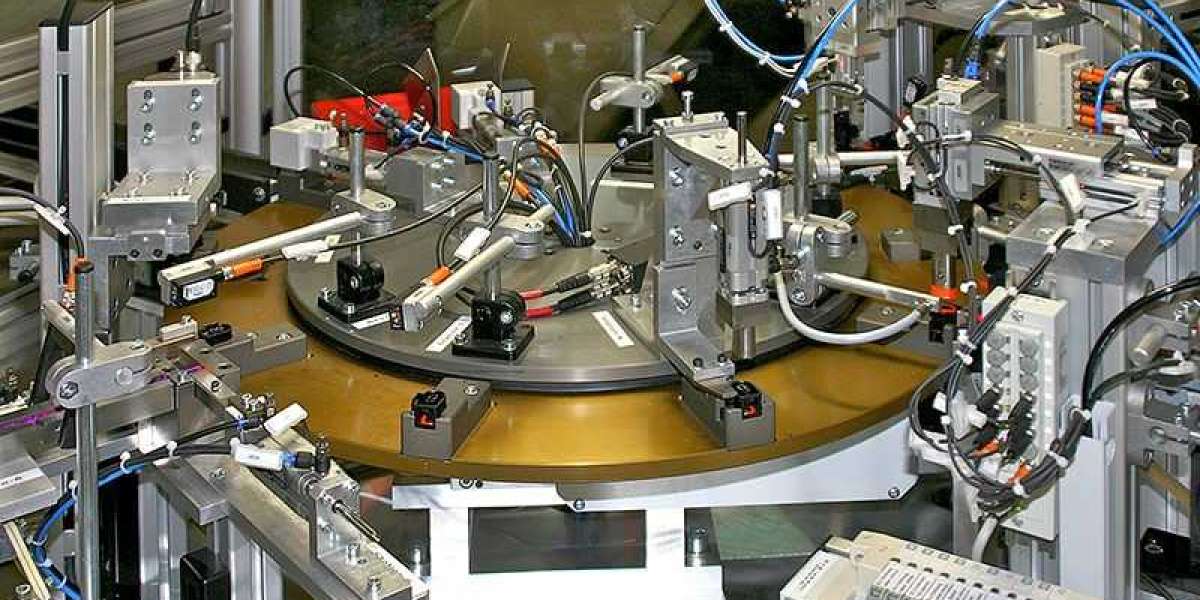Automation is transforming the manufacturing world, allowing businesses to produce high-quality products faster and more efficiently. But for automation to work seamlessly, every component in the process must be precise, reliable, and repeatable. That’s where assembly fixtures come in.
These fixtures play a crucial role in stabilizing, aligning, and securing parts during automated processes. Without them, even the most advanced robotic systems would struggle with inconsistencies, defects, and inefficiencies. Let’s dive into why assembly fixtures are a must-have for any automated production line.
1. Ensure Precision and Repeatability
One of the biggest advantages of automation is the ability to produce identical parts at high speed. However, without fixtures, achieving consistency becomes nearly impossible. Assembly fixtures:
- Hold components in place with exact positioning.
- Eliminate human errors, ensuring every piece meets specifications.
- Maintain repeatability, allowing automated machines to perform precise tasks without variation.
When every product is built to the same standard, manufacturers can reduce waste and improve overall quality.
2. Speed Up Production Cycles
Automation is all about efficiency, and the right fixtures help speed up production by:
- Reducing setup time, so machines can begin operations instantly.
- Eliminating unnecessary adjustments, minimizing downtime between cycles.
- Streamlining assembly, ensuring that parts are consistently in the correct position for automated processes.
With properly designed fixtures, manufacturers can significantly reduce cycle times while maintaining quality.
3. Reduce Material Waste and Rework
Errors in manufacturing don’t just slow down production—they also waste valuable materials. Misaligned parts, incorrect placements, and rework due to defects can add up to significant losses. Assembly fixtures help minimize waste by:
- Preventing misalignment, ensuring components fit correctly every time.
- Reducing rework, as fixtures hold pieces in the correct position for machining or assembly.
- Lowering scrap rates, saving money on raw materials and boosting overall efficiency.
Fewer mistakes mean higher profitability and a more sustainable manufacturing process.
4. Improve Safety and Reduce Workplace Injuries
Worker safety is a major concern in any manufacturing environment. Handling parts manually, especially in high-speed production, can lead to accidents and repetitive strain injuries. Fixtures improve safety by:
- Reducing manual handling, minimizing worker exposure to moving parts.
- Keeping parts stable, preventing unexpected shifts or drops.
- Enhancing ergonomics, making tasks easier and safer for operators.
By integrating fixtures with automation, businesses can create a safer work environment while improving productivity.
5. Support Complex Assembly Tasks
Some manufacturing processes require high precision, making them difficult for manual operators to execute consistently. Fixtures allow automation to handle these tasks by:
- Positioning components at exact angles for robotic arms.
- Ensuring multi-part alignment, so complex assemblies come together flawlessly.
- Holding fragile or delicate parts, preventing damage during assembly.
For industries like electronics, aerospace, and medical device manufacturing, fixtures are crucial for precision-based automation.
6. Enable Scalability in Production
As demand grows, manufacturers need to scale production without compromising quality. With manual assembly, scaling up means hiring and training more workers, which can be costly and time-consuming. Fixtures help businesses scale by:
- Allowing automation to handle larger workloads without increasing labor costs.
- Ensuring consistency, so products remain uniform even at higher volumes.
- Reducing dependency on skilled labor, making it easier to expand production.
With the right fixtures in place, businesses can meet growing demand efficiently and cost-effectively.
7. Enhance Machine and Tool Life
Automation equipment is a significant investment, and wear and tear can lead to costly repairs or replacements. Fixtures help protect machinery and tools by:
- Absorbing operational stress, reducing strain on robotic arms and CNC machines.
- Ensuring proper alignment, minimizing unnecessary force and friction.
- Reducing tool damage, as parts remain stable throughout the process.
By extending the life of automated systems, businesses can maximize their return on investment.
8. Adapt to Multiple Product Variations
Modern manufacturers often produce multiple product variations on the same production line. Instead of constantly changing setups, modular fixtures allow:
- Quick changeovers, reducing downtime between different product runs.
- Adjustable configurations, accommodating different sizes and shapes.
- Interchangeable parts, allowing one fixture to support multiple products.
This flexibility enables manufacturers to remain agile and responsive to market demands.
9. Reduce Labor Costs and Dependence on Skilled Workers
Skilled labor shortages are a growing concern in many industries. Instead of relying on highly trained workers, automation with fixtures allows:
- Less manual intervention, reducing the need for skilled operators.
- Faster onboarding, as new workers can quickly learn standardized processes.
- Lower labor costs, as automation takes over repetitive tasks.
By minimizing manual labor, manufacturers can maintain productivity without worrying about workforce shortages.
10. Improve Overall Product Quality
At the end of the day, product quality determines customer satisfaction and business success. Fixtures contribute to better quality by:
- Ensuring precise assembly, so every product meets the required standards.
- Reducing human errors, which can lead to defects.
- Supporting automation consistency, maintaining high-quality output across all production runs.
A consistent, high-quality product not only builds brand reputation but also reduces warranty claims and customer complaints.
Final Thoughts
Automation alone isn’t enough to guarantee efficiency—assembly fixtures are the backbone of any well-optimized production line. They enhance precision, speed up assembly, improve safety, and reduce waste, making them an essential investment for manufacturers looking to scale operations and stay competitive.







